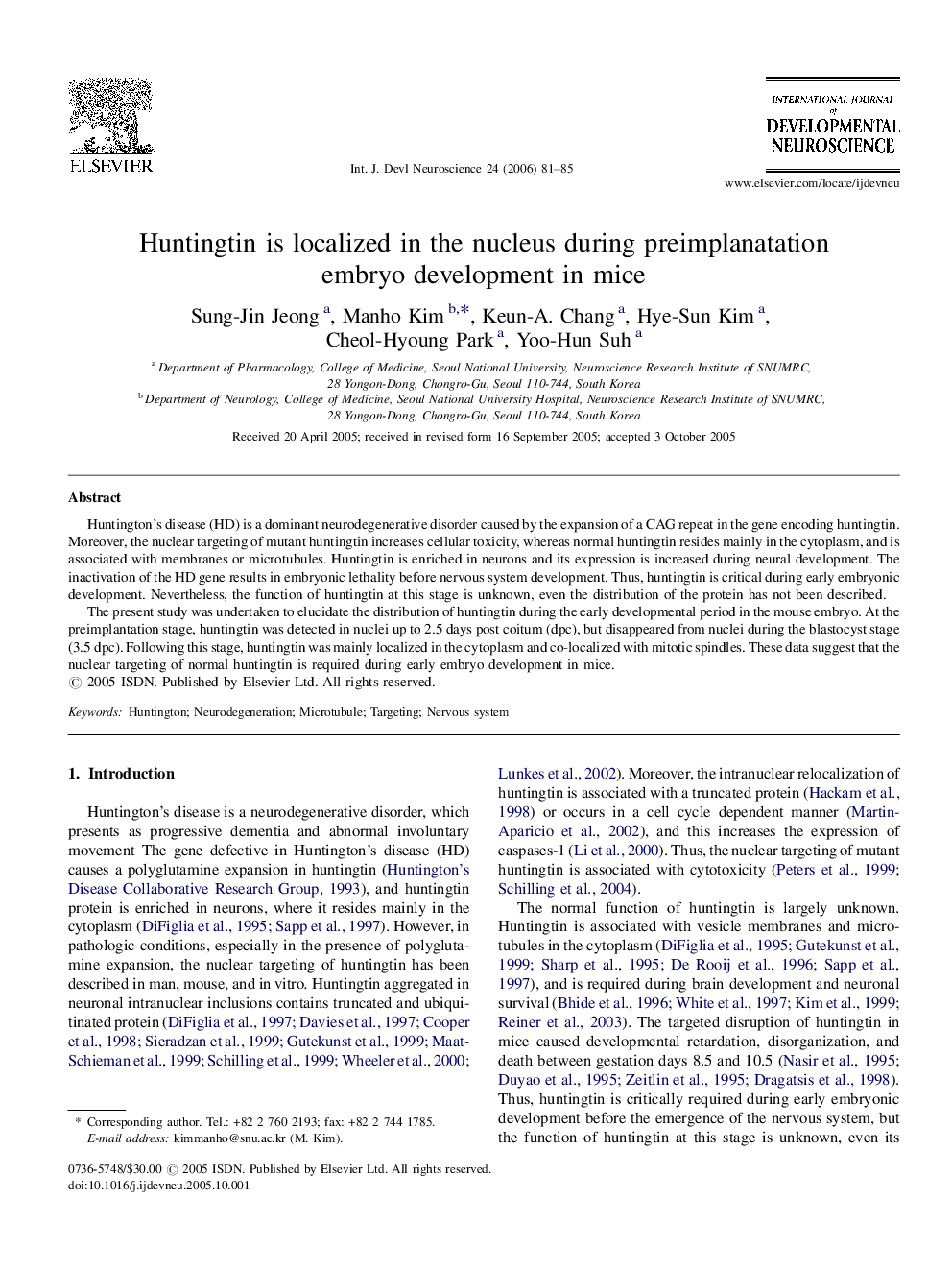| Article ID | Journal | Published Year | Pages | File Type |
|---|---|---|---|---|
| 2787208 | International Journal of Developmental Neuroscience | 2006 | 5 Pages |
Huntington's disease (HD) is a dominant neurodegenerative disorder caused by the expansion of a CAG repeat in the gene encoding huntingtin. Moreover, the nuclear targeting of mutant huntingtin increases cellular toxicity, whereas normal huntingtin resides mainly in the cytoplasm, and is associated with membranes or microtubules. Huntingtin is enriched in neurons and its expression is increased during neural development. The inactivation of the HD gene results in embryonic lethality before nervous system development. Thus, huntingtin is critical during early embryonic development. Nevertheless, the function of huntingtin at this stage is unknown, even the distribution of the protein has not been described.The present study was undertaken to elucidate the distribution of huntingtin during the early developmental period in the mouse embryo. At the preimplantation stage, huntingtin was detected in nuclei up to 2.5 days post coitum (dpc), but disappeared from nuclei during the blastocyst stage (3.5 dpc). Following this stage, huntingtin was mainly localized in the cytoplasm and co-localized with mitotic spindles. These data suggest that the nuclear targeting of normal huntingtin is required during early embryo development in mice.
